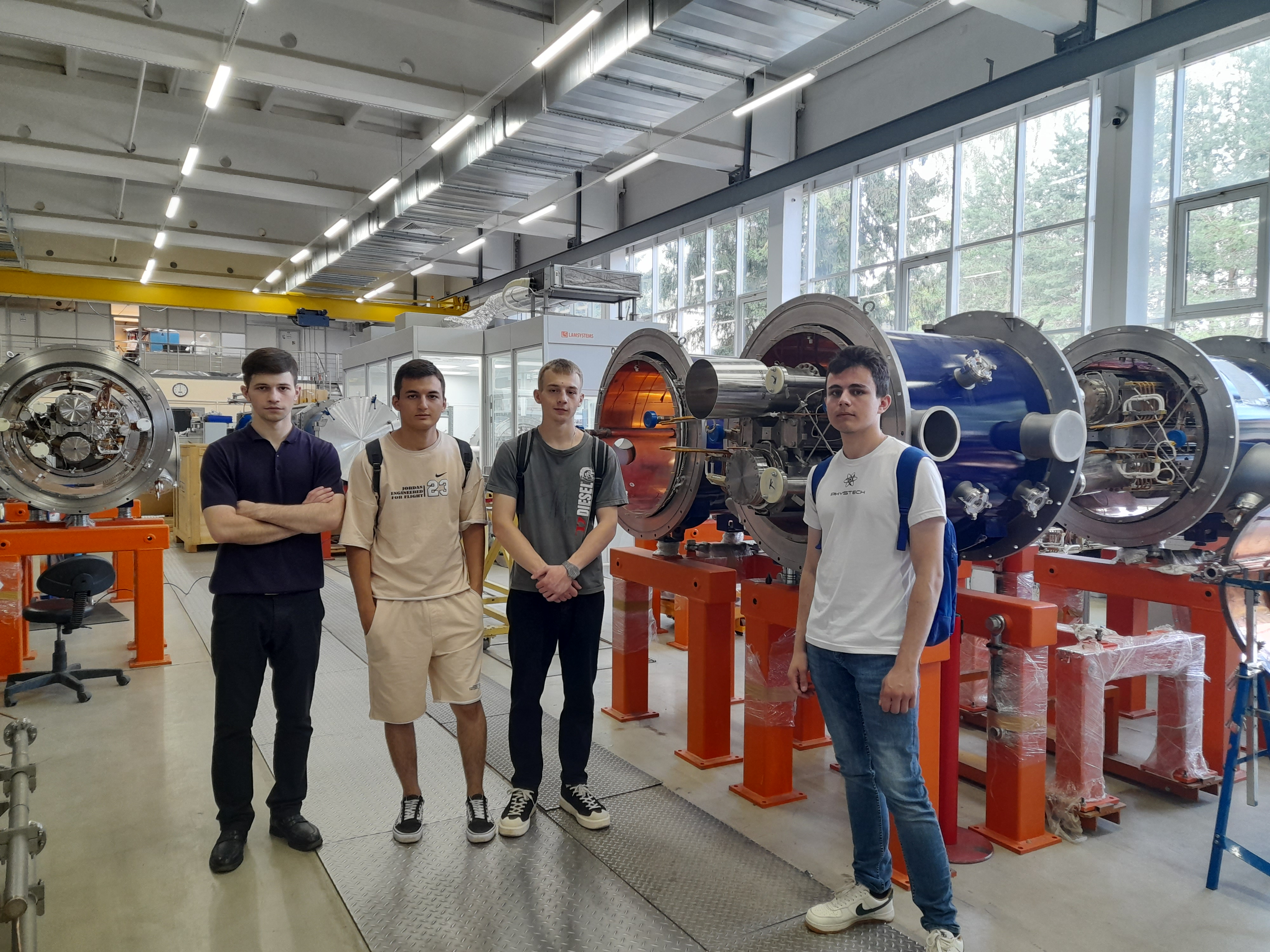NOSU students training at JINR
News, 03 August 2022
Four students of the Faculty of Physics and Technology of the North Ossetian State University named after K. L. Khetagurov are doing a two-week training at the Joint Institute for Nuclear Research. Boris Petrov, Rolen Magkaev, Soslan Gussalov, and Dmitry Dzhabiev have an introductory practice. Knowledge and skills acquired during this time will be useful for future specialists in solving IT problems of the SPD experiment in the NICA megascience project. The academic exchange became possible thanks to the first JINR Information Centre in the South of Russia, which has been operating since 2018 at NOSU.
According to Dean of the Faculty of Physics and Technology of NOSU and Scientific Leader of trainees Inga Tvauri, it is not the first time students from Vladikavkaz come to JINR. During the last academic year, 3-4 year NOSU students were engaged in joint tasks with the Laboratory of Nuclear Problems JINR under the guidance of staff members of the DLNP Sector of Elementary Particles Evgeny Khramov and Fedor Prokoshin as part of the ATLAS experiment at the LHC. Four first-year students of the Faculty of Physics and Technology joined the group of these students, who were sent to practice at JINR.
“At the IT Summer School held in July at NOSU, among other things, the results of a whole year of work of our group of students were summed up. At the same time, we were asked to select four more students to participate in the SPD project. We selected students according to competencies as initially they have basic programming skills, and they had been engaged in the ATLAS experiment project with a group of senior students throughout the previous year. Certain competencies of students were developed during that project and, of course, within the schools that we provide,” Inga Tvauri explained. She added that the main goal of students during the practice was to get acquainted with the megaproject NICA, as well as a number of software technologies and tools necessary for full integration into the SPD project.It is planned that further students will be assigned a particular scientific task that they will accomplish. “This is a long-term project, my colleagues from the Institute and I plan to carry out it for two to three years,” Inga Tvauri said. “Therefore, students who are starting the second year at university now have been selected. Accordingly, for the next three years, students have a scientific topic on which they will work. They will write term papers and final qualifying papers as part of this topic. I think that the choice of the Master study and further scientific work will be defined by the groundwork being laid now.”
Two scientific leaders among JINR staff members were chosen for the current practice: leading programmers of the Laboratory of Information Technologies Danila Oleynik and Artem Petrosyan.
Danila Oleynik said that a short course of introductory lectures on data processing of modern physical experiments had been prepared for trainees. From this course, they will learn about the operation of the systems used throughout the data path from the experimental facility to the final researcher starting with devices of detecting systems themselves to the data collection systems from the facility and data post-processing systems, both online and post-processing in distributed computing environments.
“The students show their genuine interest in all the fields. We manage to give them small practical tasks thus allowing them to “touch” particular real things. However, the essence of the practice now is to provide them with initial plunging into the Institute’s life,” Danila Oleynik highlighted. “They not only have excursions but also attend working seminars in the laboratories thus to see the everyday life of a scientific organization, a typical day of a scientist. They learn why it is important to present the results of your work at seminars and listen to your colleagues. The students acquire a wide range of knowledge necessary for taking part in modern research,” he said.
The NOSU students had excursions to the DLNP and VBLHEP sites. In MLIT, they saw the Institute’s server room and the supercomputer “Govorun”. There, students also got acquainted with ZeroMQ network technology, data transmission via http protocol, TCP and IP structures.
“The first week of our practice has passed. We are now being introduced to the state-of-the-art: the supervisors are introducing us to the software programmes, languages for programming. We have already learned about data processing and distribution, had tours of the DLNP and VBLHEP sites where we saw the supercomputer “Govorun”. We have been also shown the server room in MLIT. The most striking excursion was of course to the NICA complex. We learned about this megascience project at the IT School. We received an offer to participate in this practice there and were happy to accept it since all this is really exciting,” a participant of the practice Rolen Magkaev said.
